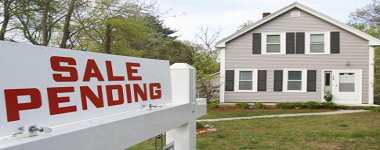The National Association of Realtors (NAR) seasonally adjusted pending home sales index fell significantly. Our analysis says pending home sales are in contraction. The quote of the day from this NAR release:
… With the cost of buying a home getting more expensive and not enough inventory, some prospective buyers are either waiting until listings increase come spring or now having to delay their search entirely to save up for a larger down payment ….

Analyst Opinion of Pending Home Sales
The rolling averages moved into positive territory. The data is very noisy and must be averaged to make sense of the situation. There is no signs of a surge in home sales, although the trends continue to be upward. I personally do not believe the new tax laws will affect home sales next year as most people do not consider income tax savings when buying a home.
Pending home sales are based on contract signings, and existing home sales are based on the execution of the contract (contract closing).
The NAR reported:
Econintersect‘s evaluation using unadjusted data:

From Lawrence Yun , NAR chief economist:
…. pending sales took a noticeable step back to start 2018. The economy is in great shape, most local job markets are very strong and incomes are slowly rising, but there’s little doubt last month’s retreat in contract signings occurred because of woefully low supply levels and the sudden increase in mortgage rates. The lower end of the market continues to feel the brunt of these supply and affordability impediments. With the cost of buying a home getting more expensive and not enough inventory, some prospective buyers are either waiting until listings increase come spring or now having to delay their search entirely to save up for a larger down payment.
Even though contract signings were down, Realtors® indicated that buyer traffic in most areas was up January compared to a year ago. The exception was likely in the Northeast, where the frigid cold snap the first two weeks of the month may have contributed some to the region’s large decline.
As new multi-family supply catches up with demand and slows rents, some large investors may begin putting their holdings of affordable single-family homes up for sale, which would be great news, particularly for first-time buyers. Furthermore, sellers last year typically stayed in their home for 10 years before selling (an all-time high); although higher mortgage rates will likely discourage some homeowners from wanting a new home with a higher rate, there are possibly many pent-up sellers who may look to finally trade-up or move down this year.













Leave A Comment